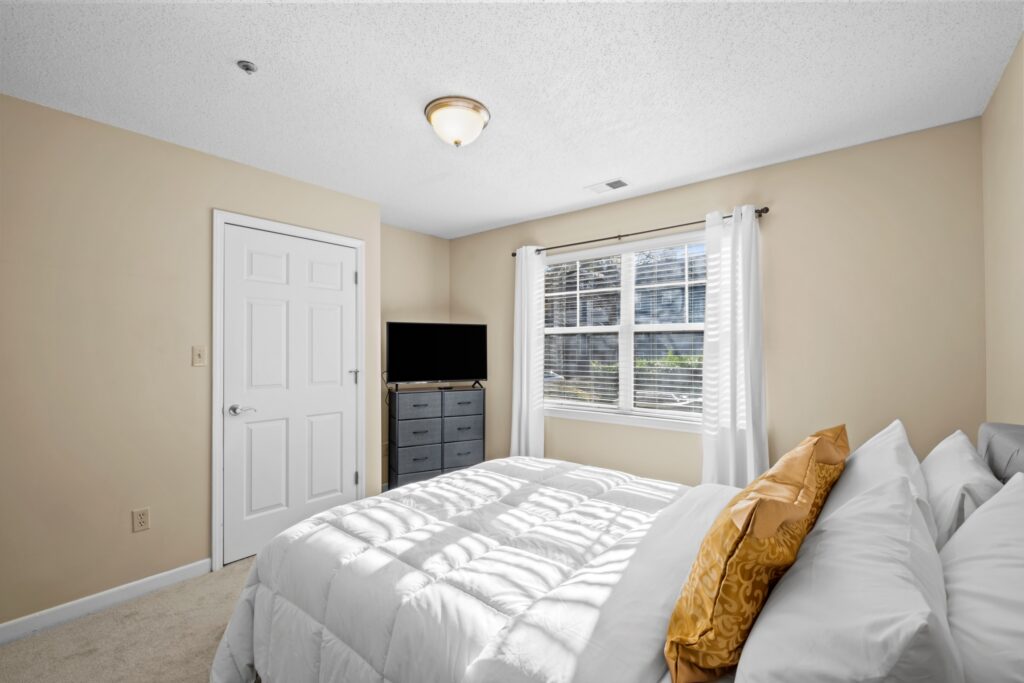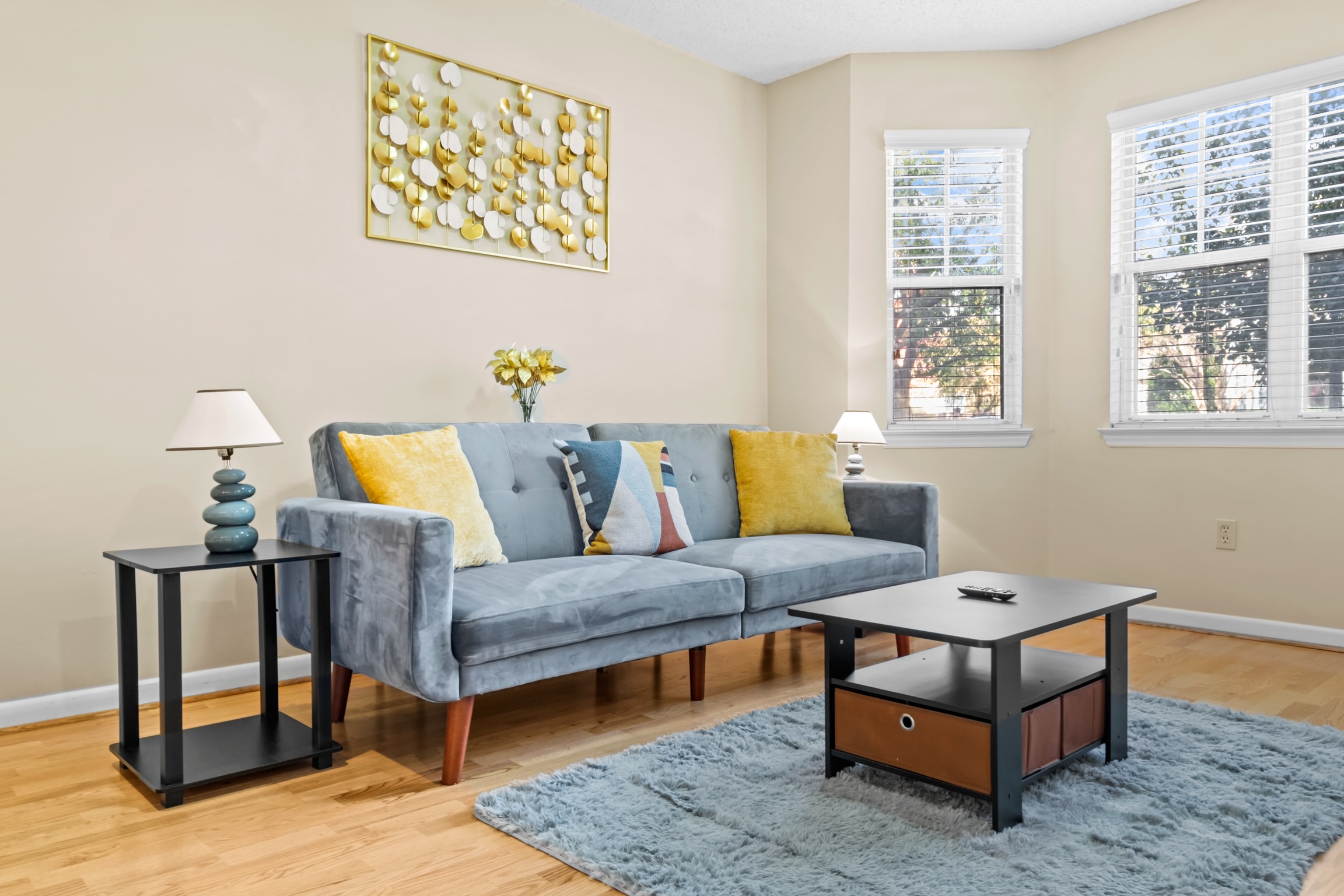In today’s world, flexibility is everything. Whether you’re a traveling nurse, relocating for work, between homes, or just testing out a new city, committing to a long-term lease can feel overwhelming—or downright impossible. That’s where month-to-month leases come in.
Month-to-month rentals offer the ideal solution for modern renters who need comfort, consistency, and convenience without the long-term commitment. In this blog, we’ll cover what a month-to-month lease really is, who benefits the most, what’s typically included, and how the booking process works. We’ll also provide a national snapshot of the average cost of these types of leases across the U.S.
What Is a Month-to-Month Lease?
A month-to-month lease is a short-term rental agreement that automatically renews every month until either the tenant or landlord gives proper notice—typically 30 days—to end the lease. Unlike traditional 6- or 12-month contracts, this arrangement gives both parties more flexibility.
Month-to-month leases are especially common in furnished midterm rentals, which are designed for guests staying 30 days or longer but not necessarily looking to settle in for a year.

Why Month-to-Month Leases Are Ideal
- Ultimate Flexibility
Life changes fast—jobs change, families grow, and opportunities arise. A month-to-month lease lets you pivot quickly, without being tied down. - No Long-Term Commitment
If you’re unsure about your plans or just testing the waters in a new city, this lease model gives you breathing room. - Less Risk for Renters
If your housing situation isn’t a good fit—due to location, noise, or amenities—you’re not stuck for 12 months. - Great for Temporary Assignments
Professionals on contract work, students on internships, and digital nomads often need just a few months of stable housing. - Fully Furnished Options Available
Many month-to-month rentals come completely furnished and ready to move in, down to the cookware and towels. - Utilities Often Included
To make the rental as hassle-free as possible, most landlords include Wi-Fi, water, electricity, and trash services in the monthly cost.
Average Cost of Month-to-Month Rentals in the U.S.
The cost of a month-to-month rental varies by city, property type, and amenities. Here’s a chart with average prices across several major metro areas:
| City | Average Monthly Rent (Furnished, 1BR) | Utilities Included? |
|---|---|---|
| New York, NY | $3,800 | Yes |
| Los Angeles, CA | $3,200 | Yes |
| Charlotte, NC | $2,400 | Yes |
| Austin, TX | $2,300 | Yes |
| Denver, CO | $2,600 | Yes |
| Chicago, IL | $2,400 | Yes |
| Atlanta, GA | $2,200 | Yes |
| Miami, FL | $2,700 | Yes |
| Seattle, WA | $2,800 | Yes |
| Phoenix, AZ | $2,000 | Yes |
Note: Prices fluctuate based on seasonality, availability, and demand. In general, month-to-month leases are 15–30% more expensive than traditional leases, but you’re paying for the flexibility and convenience.
What’s Typically Included in a Month-to-Month Lease?
Most month-to-month rentals cater to professionals and people relocating, so they come fully equipped. Here’s what you can usually expect:
- Furniture (bed, couch, dining set, etc.)
- Smart TV + Wi-Fi
- Utilities (electricity, water, trash, gas, etc.)
- Washer & Dryer (in-unit or on-site)
- Stocked Kitchen (pots, pans, utensils, etc.)
- Bedding and Towels
- Flexible Check-In/Out Dates
- Online Payment & Leasing Process
Who Benefits Most from Month-to-Month Rentals?
Month-to-month rentals are not just a backup option—they’re an intentional solution for many lifestyles:
1. Traveling Nurses & Healthcare Professionals
Healthcare workers often accept temporary assignments in different cities, typically lasting 8–13 weeks. These professionals need housing that aligns with their unpredictable schedules, long hours, and need for rest and recovery.
A month-to-month lease allows them to:
- Avoid hotel living, which can feel impersonal and expensive.
- Choose fully furnished, quiet spaces near hospitals or medical centers.
- Extend their lease with ease if their assignment is renewed.
- Move on without financial penalty if their contract ends early or location changes.
For a nurse working 12-hour night shifts, having a clean, quiet, and private space that feels like home—even just for a few weeks—makes a major difference in mental health and job performance.
2. Corporate Professionals on Temporary Relocation
Many companies relocate staff for short-term projects, leadership training, or onboarding periods in new markets. Month-to-month rentals provide a turnkey housing solution that requires no furniture shopping, utility setup, or long-term commitment.
Executives and project managers benefit from:
- Staying in desirable neighborhoods close to work or transportation hubs.
- Moving in and out with minimal disruption to their busy schedules.
- Enjoying a “home away from home” rather than impersonal corporate hotels.
Some even use these leases as a way to test out new neighborhoods before deciding where to buy or lease long-term.
3. Homeowners Between Homes
Selling one home and waiting to close on another often involves tight timelines—and unexpected delays. During this in-between period, families and individuals need a reliable, comfortable place to stay that doesn’t involve moving in with relatives or paying premium hotel rates.
Month-to-month rentals are ideal because:
- They give homeowners breathing room without rushing into a bad long-term lease.
- They allow families to stay together with enough space and comfort.
- They offer a cost-effective alternative to extended hotel stays.
With storage and packing already stressful, having a fully furnished, flexible space ready to go can be a lifesaver during these transition periods.
4. Divorced or Newly Separated Individuals
Going through a separation or divorce can be emotionally and logistically difficult. Suddenly needing new housing—often fast—without knowing what the future holds means flexibility becomes a top priority.
Month-to-month leases are a supportive solution because they:
- Provide a private, neutral space for individuals to regroup and rebuild.
- Require no long-term financial commitment during an uncertain time.
- Allow time to explore future housing options (rent vs. buy, solo vs. shared living).
- Offer a sense of normalcy, routine, and peace during a personal upheaval.
For someone needing a fresh start without being locked into another long-term situation, this option can feel like a necessary bridge to healing.
5. Digital Nomads & Remote Workers
Thanks to the rise of remote work, a growing population of professionals are embracing a location-independent lifestyle. These individuals often prefer to live in one city for a few months before moving on to the next.
Month-to-month rentals align perfectly with their lifestyle because:
- They eliminate the hassle of frequent move-ins and outs.
- They offer fully furnished homes with high-speed internet—essential for productivity.
- They allow flexibility to explore new cities, climates, and communities.
- Many come with flexible start/end dates that sync with their travel rhythm.
Whether living in Austin this month and Denver the next, digital nomads rely on short-term leases to fuel both their work and their wanderlust.
6. Interns and Grad Students
Many internships, residencies, and graduate programs run for just a few months or over the summer. These programs rarely align with traditional lease terms, leaving students scrambling for flexible options that won’t cost a fortune.
Month-to-month rentals offer:
- A safe and stable place to live without the need to sign a 12-month lease.
- Furnished units, reducing the need to move furniture or invest in short-term buys.
- Proximity to work sites, universities, or research centers.
- Lower deposits and less risk for those still figuring out their next step.
This is particularly beneficial for out-of-state or international students who don’t want the burden of subletting or breaking leases early.
The Process of Booking a Month-to-Month Lease
The process is surprisingly simple—most properties can be booked in just a few steps:
Step 1: Find the Right Property
Search on platforms like Furnished Finder, Airbnb (for longer stays), or local property management websites that offer corporate housing.
Step 2: Apply or Inquire
Submit an application or message the host/landlord. Some listings require background checks, credit reports, or proof of employment.
Step 3: Sign a Digital Lease
Once approved, you’ll typically be emailed a short-form lease that includes:
- Start & end date (if known)
- Rent amount and what’s included
- Notice period for moving out (typically 30 days)
Step 4: Pay the Deposit
Expect to pay one month’s rent + security deposit. Some owners offer prorated rates for mid-month check-ins.
Step 5: Move In
Because units are fully furnished and utilities are set up, moving in is often as easy as bringing your suitcase.
Key Takeaways
Month-to-month leases aren’t just convenient—they’re often the smartest option for today’s mobile, ambitious, and adaptive lifestyle. Whether you’re in town for a few months or navigating a life transition, this lease structure gives you freedom without sacrificing comfort.
Pros:
- Flexible and low-risk
- Furnished and move-in ready
- Utilities and Wi-Fi often included
- Ideal for professionals, students, and families in transition
Cons:
- Slightly more expensive than long-term leases
- Limited availability in some cities
- May require higher security deposit

